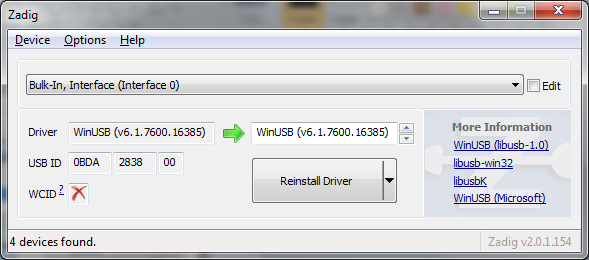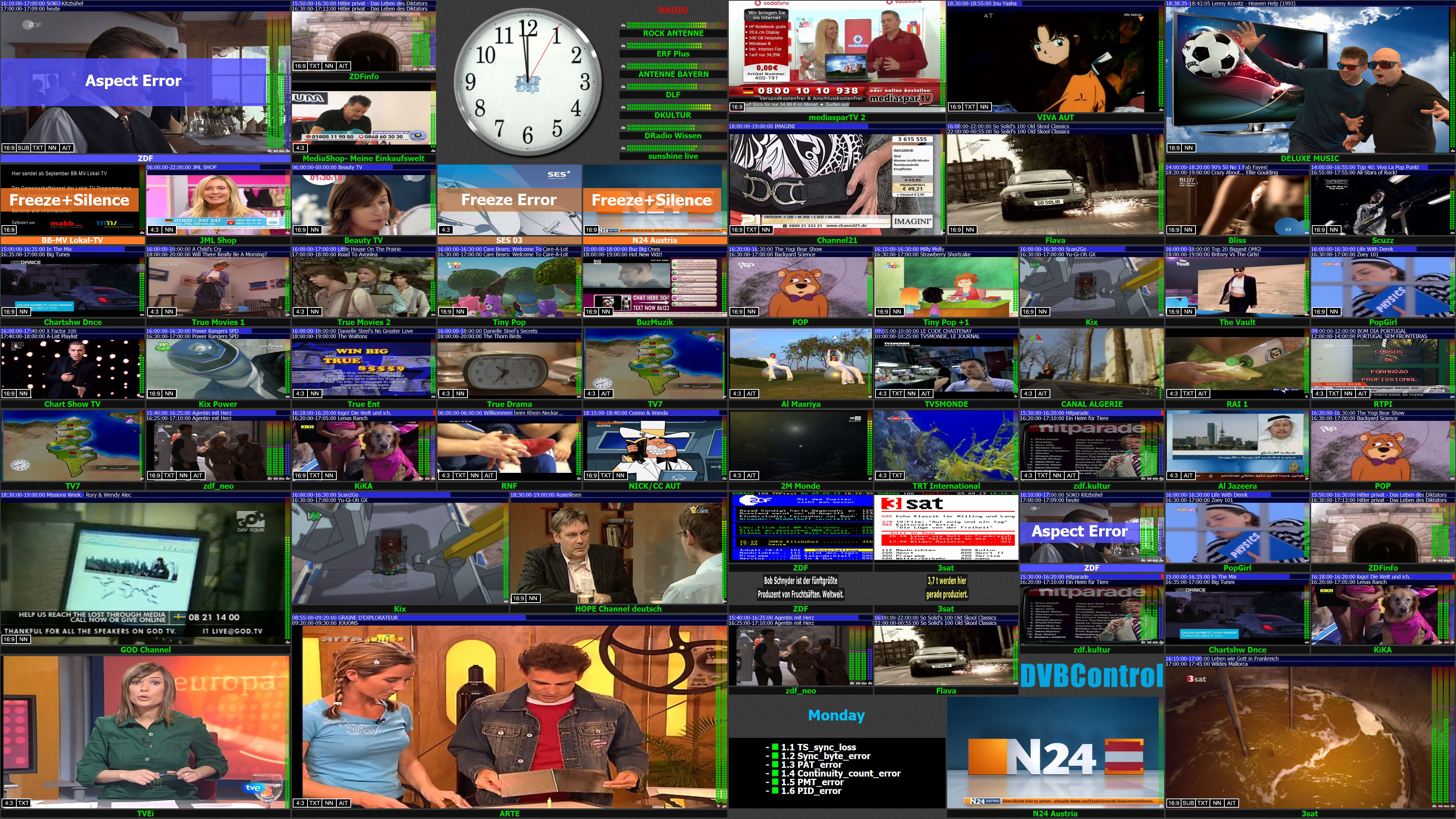- Usb Dvb T Software Download
- Dvb Output Driver Download For Windows 10
- Windows Dvb T Drivers
- Dvb Output Driver Download For Windows Xp
Download AVerMedia TECHNOLOGIES, Inc. TV-tuner drivers or install DriverPack Solution software for driver scan and update. AVerMedia A336 MiniCard Hybrid DVB-T. AVerMedia A336 MiniCard Dummy IR Receiver. DriverPack Online will find and install the drivers you need automatically. Download DriverPack Online for free. Download the latest drivers, firmware, and software for your.This is HP’s official website that will help automatically detect and download the correct drivers free of cost for your HP Computing and Printing products for Windows and Mac operating system.
Install Brooktree DVB-TV 878 Digital Capture Driver driver for Windows 7 x64, or download DriverPack Solution software for automatic driver installation and update. Uploaded on, downloaded 1155 times, receiving a 93/100 rating by 452 users. USB Driver Updates. Need USB Driver Downloads for Windows 10, Windows 8, Windows 7, Vista and XP? If you are having problems with your USB not working, read the article below to help fix your USB problems. USB issues often, but not always, relate to drivers problems.
This page contains information to help an 'end user' install DVB device drivers in a GNU/Linux system.
.

- 1Case 1: Out of the Box Support

Case 1: Out of the Box Support
If your Linux installation is using a recent 2.6 kernel which has been compiled with many driver modules (as is typical with most Linux 'distros'), then there is a chance that drivers for your device are already included. If that is indeed the case, then upon boot-up, your device should be 'automagically' detected and will have the appropriate driver modules loaded into memory. Which modules are required? Well, the answer to that question depends entirely upon the chipsets used by your device -- see the relevant wiki article for your device for a listing of such components and required drivers. If you are aware of which driver modules are required for your device, you can see if they were loaded by running the following command in a terminal:
lsmod
Provided that the drivers were loaded, you should now have a non-empty /dev/dvb directory. (Note: this directory is created automatically by udev, so you do not need to create it yourself). You can check on whether this is true for you with the following command:
ls -l /dev/dvb/
(alternatively, you can browse your directory structure with the graphical file manager of your choice). If you have a single DVB device installed in your system, then the output of the above command should reveal that /dev/dvb/ is populated by adapter0. Digging further,
ls -l /dev/dvb/adapter0
reveals the devices associated with adapter0 for which the drivers have control. If you have more then one DVB device, you can see the same for all with
ls -l /dev/dvb/adapter*
Now, if you don't have a populated /dev/dvb/ directory, then something has failed. There could be several reasons for such. In any regard, consider that:
- If a module was not loaded but you know you have it configured on your system, you can try manually loading it with the appropriate modprobe command.
- If, on the other hand, you have all the modules active (listed in lsmod) but no /dev/dvb/ directories to be found, check dmesg for any errors, ie:
dmesg | grep dvb
- The problem may be as simple as the firmware for the device not being loaded. For example, for many TechnoTrend & Hauppauge (and other similar 'premium' cards), if the dvb-ttpci firmware is not available you will observe an error such as:
- Resolving that missing firmware issue should then result in proper detection and configuration of your device.
- The kernel used by your distro does not have recent enough drivers to support your device (in which case, see 'Case 2' below)
Debian Etch
In case you have Debian Etch, you will neither have out-of-the-box support in the kernel, nor will you be able to compile the drivers yourself (The compiling fails with an error like /usr/src/v4l-dvb/v4l/videodev.c:499: error: unknown field 'dev_attrs' specified in initializer).
The best bet for Debian Etch users is to install a new kernel from backports.org (Current version 2.6.24). This is most likely to provide with all necessary drivers. To install the backports kernel, you must use the backports.org repository. The following code should do, but please be sure to read the instructions anyway:
Now, to install the kernel, run (just an example, depending on the current kernel in backports, and the appropriate kernel for your machine/setup):
Debian should automatically install the initrd in /boot as well as update /boot/grub/menu.lst; elsewise you must do this yourself. When done, you can reboot. After reboot, you should have all necessary modules at your service. (Don't forget to have copied the firmware to /lib/firmware, if necessary.)
Successfully tested with a TerraTec Cinergy DT USB XS Diversity.
Case 2: Installation of LinuxTV Drivers Required
The LinuxTV project hosts the latest set of drivers for v4l-dvb devices; see http://linuxtv.org/repo
1. Acquire the necessary software
Before you can start you need the following:
- mercurial: needed to download the latest source
- kernel-headers, make, gcc: needed to compile the the driver
The following provides examples of how to install the Mercurial software package for some distributions (Note that [sudo] means that you only have to specify 'sudo' if you aren't root, otherwise omit it.):
- On Debian-based distributions use the following command to install all required software:
$ [sudo] apt-get install mercurial linux-headers-$(uname -r) build-essential
- On Gentoo-based distributions use the following command to install mercurial. Other dependencies are installed in main system tree.
$ [sudo] emerge mercurial
- On Fedora it's just as easy:
$ [sudo] yum install mercurial
- On Mandriva, provided you setup a contrib source, you can use:
$ [sudo] urpmi mercurial
2. Obtain latest v4l-dvb source code from LinuxTV
After installing all required software, download the latest source code with the following command:
This creates a directory called v4l-dvb in the current working directory.
2.1 Upgrading an older installation
Update your local copy of the source code with the following command (entered from the previously created v4l-dvb directory):
When job completes, enter the following command:
to get a working local copy, ready to compile.
3. Compile the v4l-dvb source code
Change to the directory that contains the previously downloaded source:
Then compile the source:
If you run into any problems here, contact the developers via irc.freenode.net on #linuxtv or on #dvb.
4. Install the drivers
The next step is to install the driver by executing:
Download acer altos g200 driver. 5. Remove any old modules from memory
Perhaps the most straightforward thing to do at this point for the newbie is to restart your system.
More experienced users might prefer to use 'sudo make unload' (which essentially removes all modules (rmmod) for the device that might be currently loaded in memory from the running kernel) and then 'modprobe' the appropriate driver modules for the device.
Either way, the end result should be the same.
6. A note on firmware
Some devices also require firmware which is uploaded from the host PC to the card in order to operate.
In some cases, when the device is correctly recognized, the associated drivers provide information as to which firmware file is required -- look in the system log or use the command dmesg | grep dvb (see an example of this in the 'Out of the Box Support' section above).
In other cases, obtaining the correct firmware is not so straightforward a task. The very first thing you need to know is what device you're using; see Gathering Information About Your Unidentified/Unsupported Device. Once you have established the device's identity, you can then move on to obtaining the correct firmware. In addition, information in wiki articles (eg. such as DVB-T USB Devices) will cite the appropriate firmware required. If you're still at a loss, a Google search may shed light on what file you need. Note, however, that not all supported devices have easily available firmware (eg. Hauppauge HVR 1100 & 1300). Firmware for such cards could be loaded via temporary installation in a Mirosoft Windows System with the manufacturer-supplied drivers.
In any regard, once you find and obtain the necessary firmware for your device, copy it into the appropriate hotplug directory. The location of this directory depends on your distribution, but normally it's one of these:
- /lib/firmware
- /usr/lib/hotplug/firmware
Usb Dvb T Software Download
Solution for 2.4.x kernels
Dvb Output Driver Download For Windows 10

The Linux DVB drivers will only work with reasonably new 2.6 kernels. Consequently, you should upgrade your system to one which runs a 2.6 kernelbefore attempting to use DVB. You should also investigate installing the 'udev' package (for kernels >= 2.6.15) which automatically populates the /dev directory when devices are found.
Windows Dvb T Drivers
Further documentation
Dvb Output Driver Download For Windows Xp
- See Testing your DVB device for instructions on testing your newly installed device

